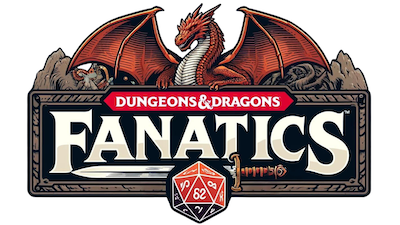
DnD Flanking Mechanic Dropped from 2024 Rules
As an Amazon Associate I earn from qualifying purchases.
Combat has always been an essential part of Dungeons & Dragons. Yet over the years it’s evolved to become increasingly more complex and tactical. In the fifth edition of the game, the optional rule of Flanking has become an example of how combat now functions. Essentially, Flanking means that if two or more allies are on either side of an enemy, they both get advantage on attack rolls.
And while it’s a relatively simple mechanic, it’s also one that’s often been polarizing. For some Dungeon Masters, Flanking adds strategic depth and encourages player cooperation. For others, it’s a rule that’s overpowered and easily abused.
Which is why it may be surprising to some to learn that Flanking has been removed as a rule from the new 2024 Player’s Handbook and 2024 Dungeon Master’s Guide. So just how does Flanking work in DnD 5e and why was it dropped from the new rules? Below, we break out all the details.

What is Flanking in DnD 5e?
Flanking is an optional combat rule found in the 2014 Dungeon Master’s Guide that was focused primarily on players using miniatures or tokens on battle maps. The rule allows two or more combatants to gain advantage on attack rolls against a common enemy if they are on opposing squares or hexes.
There are, however, a few limitations and points to consider:
- A creature cannot flank an enemy that it can’t see.
- A creature can’t flank while it is Incapacitated.
- Larger creatures are able to flank if any square/hex around them qualifies.
- The spell Spiritual Weapon (and similar non-creature objects) cannot flank (although there is debate on this).
- Animal companions and familiars controlled by PCs can qualify for flanking.

Because Flanking applies to DnD battle mats (both physically and online with VTTs) the way it works differs depending on whether you are using squares or hexes.
- Flanking on Squares: When you and at least one ally are adjacent to an enemy and on opposite sides or corners of the enemy’s space, you can flank that enemy, and each of you has advantage on melee attack rolls against that enemy. If you aren’t certain if you’re flanking, trace an imaginary line between the centers of your characters’ spaces. If the line passes through opposite sides or corners of the enemy’s space, the enemy is flanked.
- Flanking on Hexes: When your and at least one of iyour allies are adjacent to an enemy and on opposite sides of the enemy’s space, you flank that enemy, and each of you has advantage on attack rolls against that enemy. On hexes, count around the enemy from you to your ally. Against a Medium or smaller creature, you both flank if there are 2 hexes between you. Against a Large creature, you flank if there are 4 hexes between you. Against a Huge creature, you must have 5 hexes between you. Against a Gargantuan creature, you must have at least 6 hexes between you.

Why Was Flanking Removed from DnD 2024?
While Wizards of the Coast has not officially commented on the rules change, Flanking was likely removed as it often disrupted game balance and could quickly make combat one-sided. The rule also led to an unintended effect known as the “conga line,” where players would line up in alternating rows to gain advantage by Flanking. This tactical formation was often criticized for taking the immersion out of combat, making battles feel more like a board game than a fluid skirmish with a wide range of tactical options.
Another reason for its removal is likely that Flanking devalued other ways of gaining advantage. For example, Barbarians have a number of abilities that provide advantage in combat, but could simply be ignored in favor of Flanking. Similarly creature abilities, such as a Kobold’s Pack Tactics, are not nearly as powerful or unique given that players can gain a similar advantage with minimal risk or tactical cost.

Final Thoughts
For some players, the removal of Flanking represents a streamlining of combat in DnD 5e, restoring some of the challenge and opening up more combat options. For others, it’s a loss of a tactical option that encouraged teamwork and added realism to the battlefield. Of course, in Dungeons & Dragons any rule (even optional ones or ones that have been removed) can be used at the DMs discretion as a house rule. So there’s nothing to stop you and your group from keeping Flanking a part of your game.
You can find the complete rules for combat in the 2024 Player’s Handbook, which is available which is available now on D&D Beyond and Amazon.
More D&D Rules Coverage
For more from the world of Wizards of the Coast, visit our D&D Rules page.






